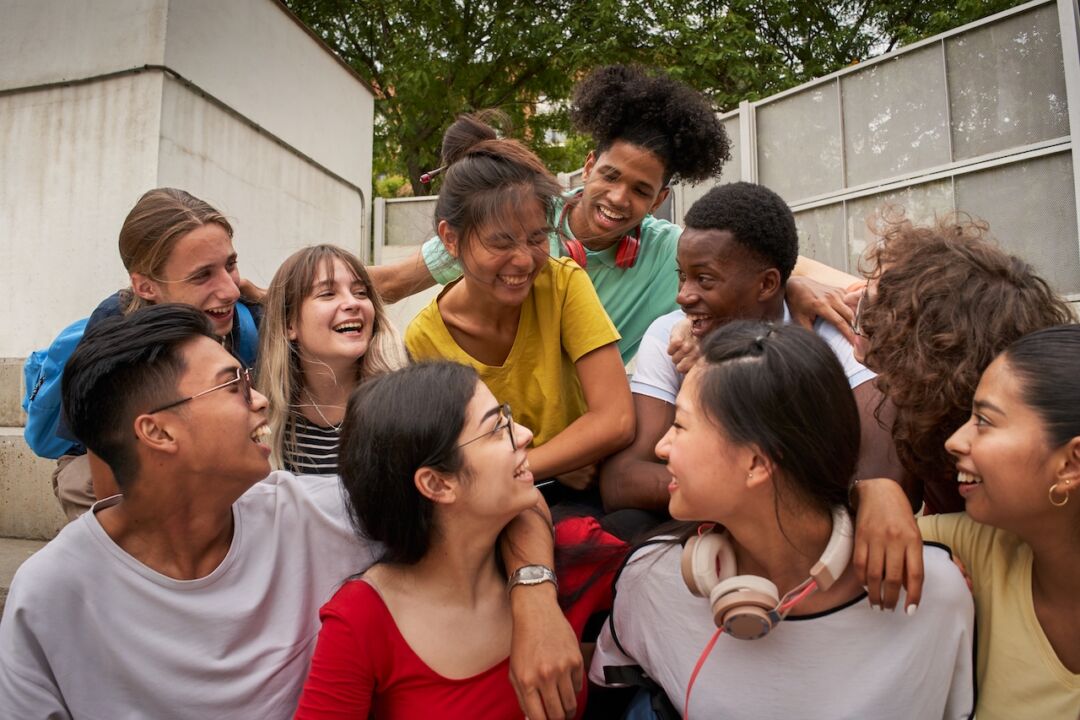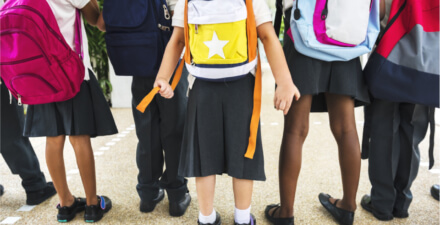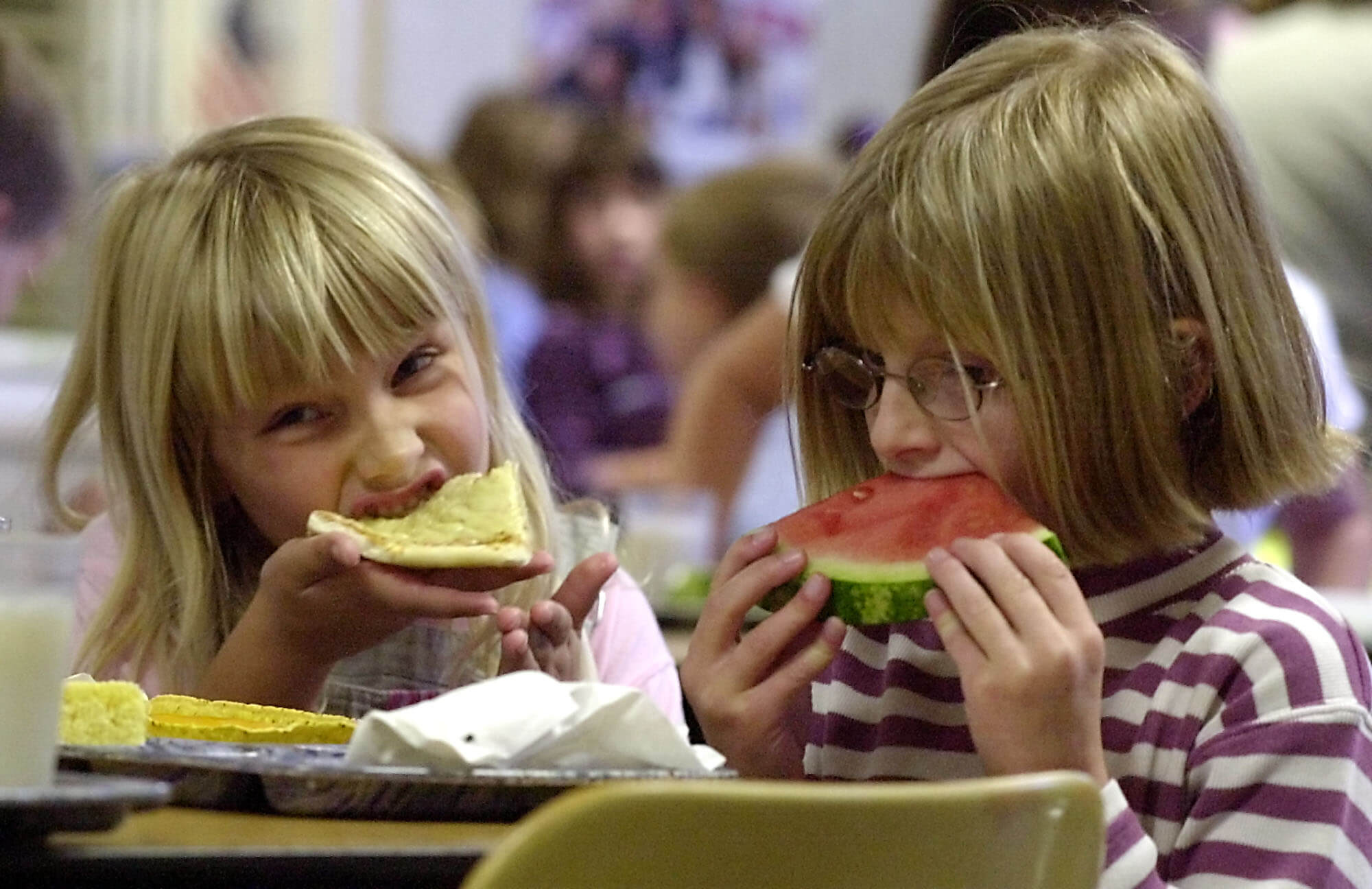New research suggests that social circles affect upward mobility among U.S. children and young adults

In recent weeks, students across the United States headed back to school to continue their educations. From Kindergarten through high school and into college, these students are gaining valuable human capital that will help prepare them for their future careers and are building their knowledge base, as well as the social circles that will accompany them through their years of learning ahead.
While studying hard and getting good grades certainly has an impact on students’ future success, new findings from a pair of research papers suggests that who one studies and becomes friends with can also have important implications for upward economic mobility, particularly among lower-income children. Indeed, the studies find that if low-income children grew up in neighborhoods where 70 percent of their friends were from higher-income families, the lower-income children’s future incomes went up by an average of 20 percent.
The papers suggest that this boost in income is driven by so-called economic connectedness—a kind of social capital that looks at the proportion of children from low socioeconomic status who have friends from high socioeconomic backgrounds. In fact, the studies find that economic connectedness is the strongest predictor of upward mobility—more so even than other oft-studied mobility factors, such as neighborhood income level, poverty rates, family structures, or school quality—and is the main reason why some places offer higher rates of mobility than otherwise-similar places. The studies also explain that high schools and colleges both prove to be important places to build and foster these connections.
The link between social capital and upward mobility has been examined before, but the two new papers do so on an unprecedented scale. The four lead co-authors—Raj Chetty of Harvard University, Matthew Jackson of Stanford University, and Theresa Kuchler and Johannes Stroebel of New York University—worked alongside a team of researchers to examine anonymized data from Facebook for more than 70 million individuals and 21 billion friendships. Because the amount of data was so large, the authors were able to measure the link between social capital and upward economic mobility better than ever before, thus allowing them to identify economic connectedness as the most relevant factor to achieving improved outcomes in the future.
In the first paper, the authors measure and analyze three types of social capital by U.S. ZIP code using the Facebook data: connectedness between different types of people, including economic connectedness, or friendships between low- and high-income people; social cohesion, or the level of connection between one’s social circles; and civic engagement, such as rates of volunteering for or self-reported trust in local organizations. The co-authors find that economic connectedness is the strongest of the three in predicting whether someone from a low socioeconomic background as a child has a higher socioeconomic status as an adult.
To be sure, the other two types of social capital matter as well. Yet the study suggests that in places where social cohesion and civic engagement are lacking, higher economic connectedness alone is enough to positively impact future economic outcomes.
The second paper by Chetty, Jackson, Kuchler, and Stroebel delves into how these so-called cross-class friendships actually form. The co-authors find that two main factors affect these relationships: exposure to socioeconomically diverse groups and friending bias, or the tendency for low socioeconomic status children to befriend high-income children at lower rates, even after exposure.
The research team explains that while both exposure and friending bias matter about equally in determining the proportion of high-income friends that low-income students have, exposure is the critical first step. After all, a willingness to become friends with people from different backgrounds can only be acted upon if the opportunity to meet each other happens first.
The co-authors then look at where children actually make friends, finding that high schools and colleges are critical places that enable exposure to socioeconomically diverse groups—that is, if the schools are sufficiently diverse. Yet many schools and districts in the United States are highly segregated by race and, increasingly, self-segregated by income—meaning opportunities for exposure are more and more limited for these children.
Though the study does not look specifically at the racial breakdowns of friendships—an important limitation to keep in mind—it remains an important reminder of why efforts at integration in schools are so beneficial, and segregation so deeply harmful, for U.S. children. The team of researchers makes several suggestions for how to better strengthen engagement and increase cross-class friendships, such as changing how students are grouped together in school, how school campuses are designed, where public spaces such as parks and libraries are located and what activities they offer, and which extracurriculars are encouraged and available.
In Conversation with Raj Chetty
April 24, 2019
Are today’s inequalities limiting tomorrow’s opportunities?
October 3, 2018
But the co-authors also caution that integration must go beyond simply ensuring race and class diversity or bringing people together. For policies that promote integration to really have an impact, they must allow for meaningful interaction, personal development, and shared power and goals. And they must be done in coordination with other efforts to strengthen the financial well-being of lower-income Americans.
Simply put, cross-class friendships are not a substitute for policies that strengthen U.S. schools, boost U.S. workers’ earnings and bargaining power, or facilitate wealth-building for those who have historically been prevented from such opportunities.
While it remains unclear why having higher-income friends matters, other research does suggest some potential explanations. For instance, having friends from higher socioeconomic status—or friends whose parents completed college—can influence a child’s own expectations about going to college. These parents and their broader social networks also can serve as role models, exposing children to new career paths and opportunities, and even helping place them in relatively well-paying jobs. Studies also show that having higher-income friends can strengthen a lower-income child’s cultural capital, which can signal to potential employers a good cultural fit in prestigious, high-paying occupations.
Ultimately, the findings underscore that it’s not only what you know, but who you know, that matters. Policymakers in the United States should keep these two new papers in mind as they craft proposals seeking to boost upward mobility and address growing income inequality.






